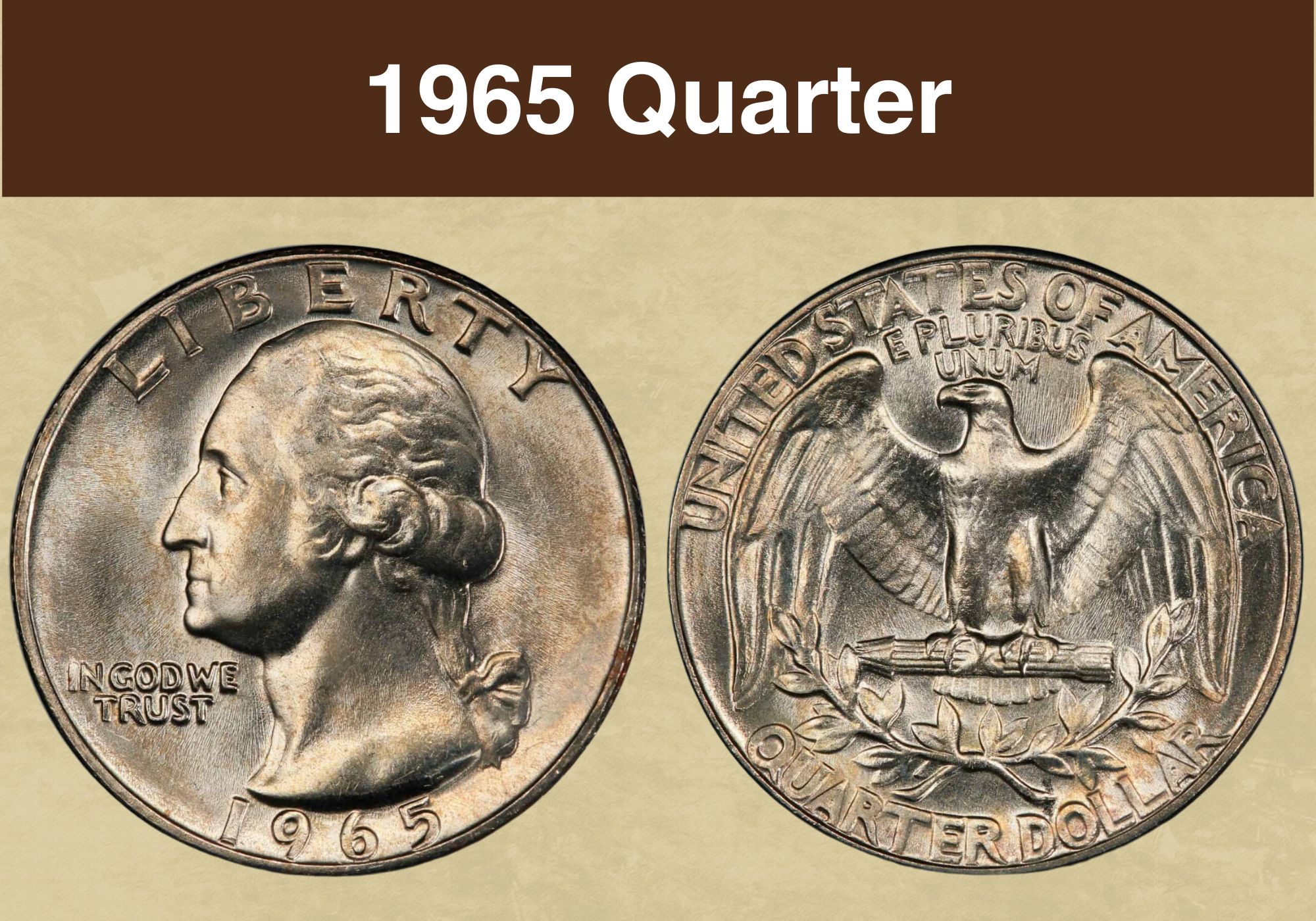
Coin Value Contents Table
Found a 1965 quarter in your pocket change and wondering if it’s worth anything? You’ve come to the right place to find out!
We’re going to look at everything you need to know about the 1965 quarter value. We’ll discover what features collectors are looking for. And we’ll help you tell the difference between a standard coin and one that might be worth serious money.
Sounds good? Let’s get started!
1965 Quarter Value Chart |
||||
| Mint mark | XF45 | MS63 | MS65 | MS67 |
| 1965 No Mint Mark Quarter Value | $0.25 | $8 | $22 | $400 |
| 1983 Special No Mint Mark Quarter Value | $1 | $10
Cameo: $30 Deep cameo: $110 |
$16
Cameo: $85 Deep cameo: $525 |
$32
Cameo: $375 Deep cameo: $5,000 |
History of the 1965 Quarter
Quarter coins bearing the date of 1965 are part of the series known as Washington quarters.
The first Washington quarter was struck in 1932, the bicentenary of George Washington’s birth. Washington was the first president of the USA, and the coin was an important part of the bicentennial celebrations.
Those first coins were made mostly of silver, but that all changed in 1965. By that time, silver was in short supply, and the cost of producing the coins was rising fast.
The increasing value of the scrap metal meant that the public started hoarding the coins. Soon, it was thought, the value of the silver might be higher than the quarter’s face value.
The Mint’s first response was to continue issuing coins dated 1964 into 1965. But that didn’t stop people removing the silver coins from circulation.
So in June 1965, President Lyndon B. Johnson announced the end of silver dimes and quarters. In future, those denominations would be made with a copper core clad in a copper-nickel alloy.
The new composition means that some changes needed to be made to the coin design. The harder metals required a lower relief to capture every detail of the images and text.
All the quarters dated 1965 were struck at the Mint facility in Philadelphia, and none had mint marks. It was three more years before quarters were struck in San Francisco and Denver, carrying the “S” and “D” mint marks on their reverse.
In addition to the regular coins for circulation, the Philadelphia Mint also struck coins for collectors. These had a distinctive satin finish and were sold in “Special Mint Sets” together with other denominations.
The Washington quarter is still being struck to this day.
Also read: Top 13 Most Valuable State Quarters Worth Money
Features of the 1965 Quarter
The Obverse of the 1965 Quarter
The same image appears on the obverse of all Washington quarters, and it’s what gives these coins their name. It depicts the first president of the USA, George Washington.
The portrait was created by John Flanagan, an American sculptor. But it wasn’t everyone’s first choice.
The original plan had been to celebrate the bicentenary of Washington’s birth with a half dollar. A committee had been established to oversee the celebrations. And that committee had selected a portrait of Washington by Laura Gardin Fraser for the commemorative coin.
But it was later decided that, instead of a single-year half dollar, Washington should be honored with a quarter. And that new quarter should continue to be minted into the future.
As it was no longer just a bicentenary issue, the decision on the coin design now fell to the Treasury Secretary, Andrew W. Mellon. The committee wrote to him, and recommended that Fraser’s portrait be chosen – but Mellon disagreed.
He preferred the image that had been produced by Flanagan. Mellon stepped down from office before the new quarters were struck, and the committee put their case again to his successor, Ogden L. Mills. But Mills declined to reopen the decision, so it was Flanagan’s design that won the day.
His portrait – like Fraser’s – was based on an earlier bust sculpted by a French artist called Jean-Antoine Houdon. Flanagan’s image shows Washington in profile, facing left.
Above it, following the curve of the coin edge, is the word “Liberty”. The date appears at the bottom, and to the left of Washington’s portrait is the motto “In God We Trust”.
In later years, the mint mark for Denver and San Francisco quarters would appear to the right of Washington. But none of the 1965 quarters have mint marks.
The Reverse of the 1965 Quarter
It was also John Flanagan who designed the reverse of the Washington quarter. That shows an eagle, patriotic symbol of the USA, perched on a bundle of arrows. Its wings are outstretched, and below the image are two olive branches to symbolize peace.
When the first quarter was launched in 1932, there was some speculation about the species of eagle shown on the coin. The New York Times took the debate particularly seriously, consulting an ornithologist to decide the matter. He confirmed that the bird depicted was a bald eagle.
It’s a large and striking image, taking up almost the whole surface of the coin. The country name appears above it, and just below that is the motto “E pluribus unum”. That’s Latin for “From the many, one”, and it refers to the creation of the USA.
The denomination is inscribed at the bottom of the reverse, curving to follow its edge.
Other Features of the 1965 Quarter
The quarters struck in 1965 measure 24.3 millimeters across and weigh 5.67 grams. Turn them on their side, and you’ll see what’s known as a “reeded edge”. That’s a series of parallel grooves that run at right angles to the face of the coin.
These grooves were originally used in the eighteenth century, and they had a very particular purpose. In those days, coins were made of gold and silver. And the grooves allowed people to tell at a glance if the edge had been clipped to remove precious metal.
This YouTube video from BigDCoins looks in detail at the 1965 quarter, and compares it to dollars dated 1964 and 1966.
1965 Quarter Grading
| # | Grade |
|---|---|
| 1 | Basal State-1 |
| 2 | Fair |
| 3 | Very Fair |
| 4, 5, 6 | Good |
| 7, 8, 10 | Very Good |
| 12, 15 | Fine |
| 20, 30 | Very Fine |
| 40 | Extremely Fine |
| 50 | About Uncirculated |
| 60 | Mint State |
| 65 | Mint State |
| 70 | Mint State |
Please check our grading guides to know your coin scale, It’s the necessary step to know the exact value of your coin.
Check out now: How to Grade Washington Quarter?
1965 Quarter Value Guides
1965 No Mint mark Quarter Value
A huge number of regular Washington quarters were struck in 1965. The Mint facility at Philadelphia churned out more than 1.8 billion of them.
Today, the independent coin graders, the PCGS, estimate that almost 455 million survive. So if you’re looking for a coin to add to your collection, it won’t be difficult to find one!
That means that values for most examples are modest. Almost any coin in circulated condition will be worth only its face value. The exceptions are coins with interesting errors, and we’ll look at those later.
Coins are graded from 1 to 70, according to their quality and condition. A coin graded 1 is in poor condition, with only enough detail visible to identify its year and denomination. At the other end of the scale, a coin graded 70 is considered flawless.
For a standard 1965 quarter to be worth more than its face value, it will need to be graded at least MS62. The “MS” stands for “mint state”, and it means the coin has never been circulated.
Grades for mint state coins start at MS60. So even some mint state 1965 quarters are worth only 25 cents. On the plus side, that means it’s easy to find an attractive coin without spending lots of money.
At MS63, the PCGS values a 1965 quarter at $8. That rises to $22 at MS65, which is the lowest level at which a coin is considered “gem quality”.
There’s a big jump in value between coins graded MS66+, worth around $55, and those graded MS67, valued at $400. That’s because there’s a marked drop in availability at MS67.
The PCGS has certified just 13 coins finer. 12 of those are graded MS67+, and are each valued at $850.
But the sole finest example in existence is graded MS68. And the PCGS values that coin at an impressive $16,500.
1965 Special No Mint Mark Quarter Value
1965 was the first year that quarters were struck in nickel-clad copper, and there was lots of interest in the coins. The Mint produced a “Special Mint Set” for collectors. This contained the Lincoln cent, Jefferson nickel, Roosevelt dime, Washington quarter, and Kennedy half dollar.
2.3 million 1965 Washington quarters were specially struck for the sets, which sold for $4 each. They can be distinguished from regular quarters by their attractive satin finish.
Because they were marketed from the start as collectors’ items, the majority of these coins were carefully stored and remain in good condition. That means they’re readily available today, keeping prices at most grades rather modest.
The PCGS values 1965 special strike quarters graded SP40 to SP45+ at just a dollar apiece. (The “SP” prefix is used for special strike coins, such as those produced for Special Mint Sets.) Even an example graded SP63 is worth only around $10, and a mint state SP65 is $16.
The finest example known to exist is graded SP70 by another coin grading agency, the NGC. There are no sale records for that one. But the same agency has also graded 15 coins at SP69. One of those last sold in 2017 for $132.
Why not more? Well, within the group of special strike coins are those graded cameos and deep cameos. Cameos are coins with a pleasing contrast between the glossy flat areas of the coin and frosted raised parts. In deep cameos, that contrast is particularly strong.
The values we’ve given so far are for coins without those designations. But cameos and deep cameos are much more expensive.
A special strike coin graded SP67 is valued by the PCGS at $32. But a cameo at the same grade is worth more than ten times that – $375. And if it’s a deep cameo, the price rises more than tenfold again, to $5,000.
Also read: Top 16 Most Valuable Modern Quarters Worth Money
Rare 1965 Quarter Error List
1965 (P) Quarter Double Die Obverse
The design is imprinted onto coins when they are struck with dies. And if there’s an error on one of those dies, that error is then transferred to the coins it produces.
That’s the case for a number of 1965 quarters, which have what known as a “double die obverse”. This is a result of a problem during the manufacture of the die used to strike the “heads” side of the coin.
The die itself has to be struck more than once to capture every detail of the design. And if either the die or the hub striking it moves between those strikes, a double image results. Double die obverse errors are often abbreviated to “DDO” in coin descriptions.
There are a couple of different varieties of double die obverse errors amongst 1965 quarters.
The rarest and most valuable variety is coded FS-101 by the PCGS. The doubling in this case is clearly visible on most of the letters of “In God We Trust” and “Liberty”, as well as the date and the left side of Washington’s portrait.
Values range from $40 for a coin graded 12 to $1,000 for the finest known examples, graded MS64.
A second variety is coded FS-102. The doubling here is less pronounced and is confined to the word “Liberty”. It’s still worth decent money, though. Even a coin graded 12 is worth around $15. And the finest known examples, graded MS65, are worth about $750.
1965 (P) Quarter, Double Die Reverse
Double die errors can also occur on the die used to strike the image on the reverse of the coin. In this case, the error is known as a “double die reverse”, or DDR.
Some of the 1965 quarters out there have this error, and they’re categorized as variant FS-801 by the PCGS.
A coin with this error is worth much more than its face value, regardless of its condition. An example graded 12 is worth around $40. The finest examples to have come to light so far are graded MS64, and the PCGS values those at $1,400 each.
Take a look at this YouTube video from JBCOINSINC for examples of many more 1965 quarters with errors.
Also read: 17 Most Valuable Quarter Errors Worth Money
Where to Sell Your 1965 quarter ?
Now that you know the value of your coins, do you know where to sell those coins online easily? Don’t worry, I’ve compiled a list of these sites, including their introduction, pros, and cons.
Check out now: Best Places To Sell Coins Online (Pros & Cons)
FAQs
What makes a 1965 quarter rare?
Most 1965 quarters aren’t rare. But coins with interesting errors, or those that are in the very finest condition, are much rarer.
Look out for coins that have doubling on one of their faces. The rarest are those with doubling on all the letters of “In God We Trust” and “Liberty”, as well as the date and the left side of Washington’s image.
How much is a 1965 quarter worth?
Almost half a billion 1965 quarters still survive. The vast majority of those are worth only 25 cents.
But coins with unusual errors, or those that are top of the class for quality, are worth much more. The finest quality regular 1965 quarter known to exist is valued at $20,000.
And a 1965 quarter graded XF45, and mistakenly struck on a silver planchet, sold at auction in 2022 for $9,300.

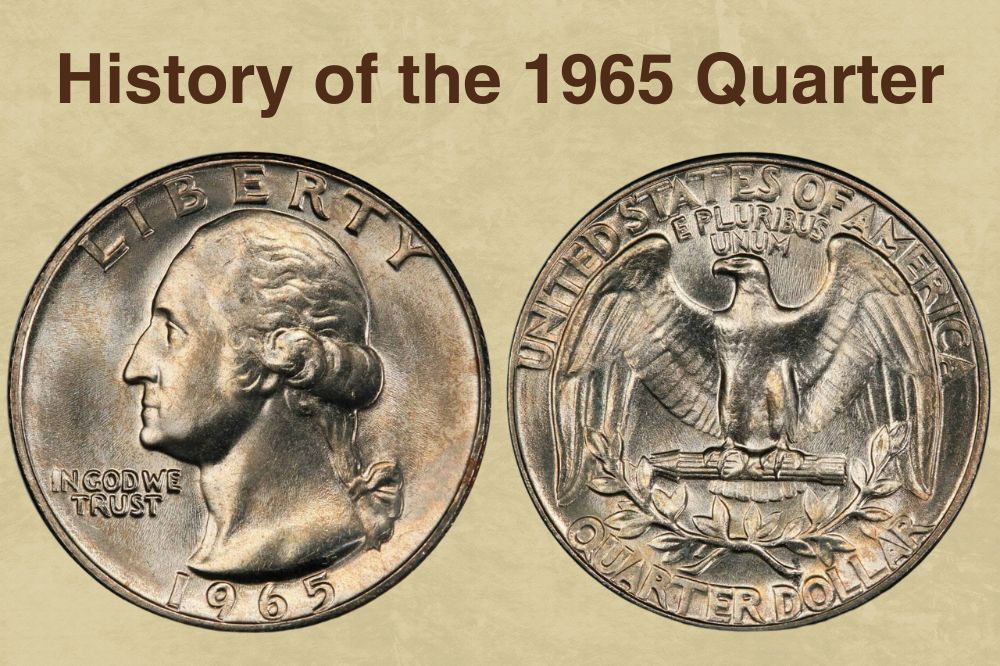
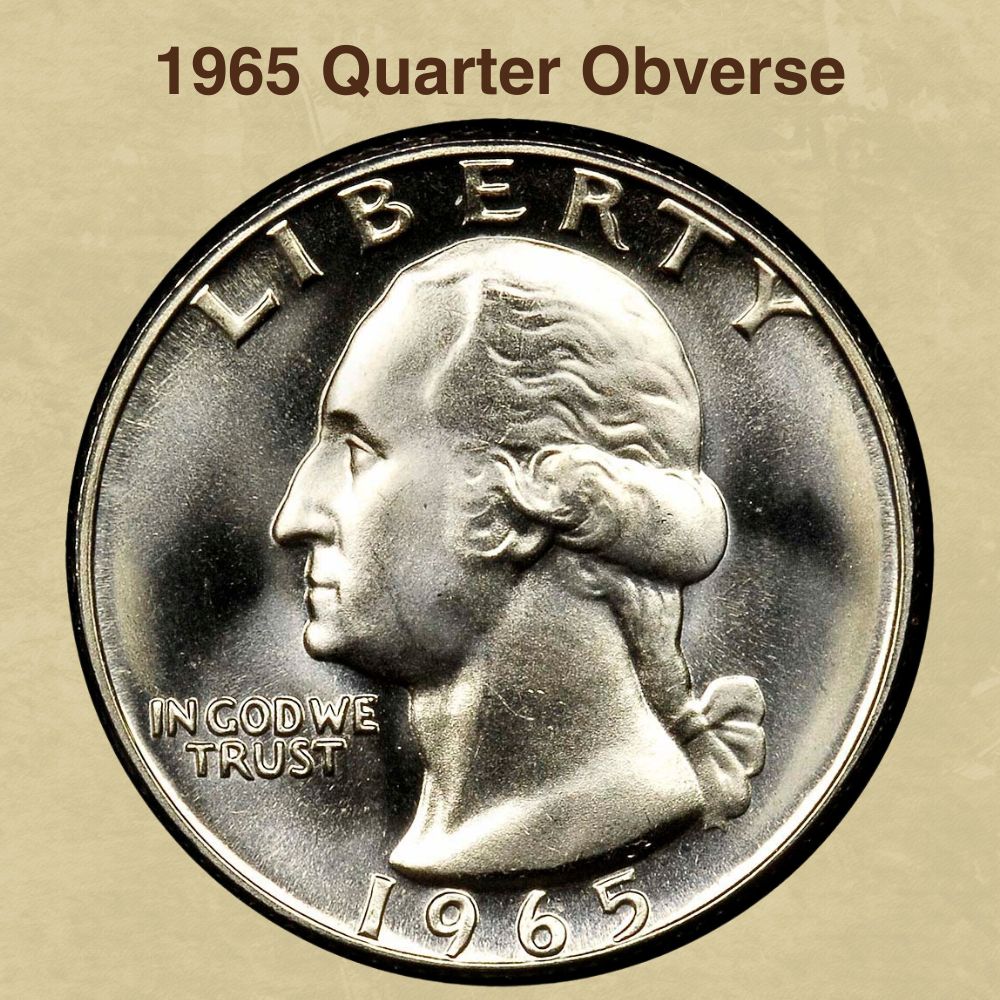
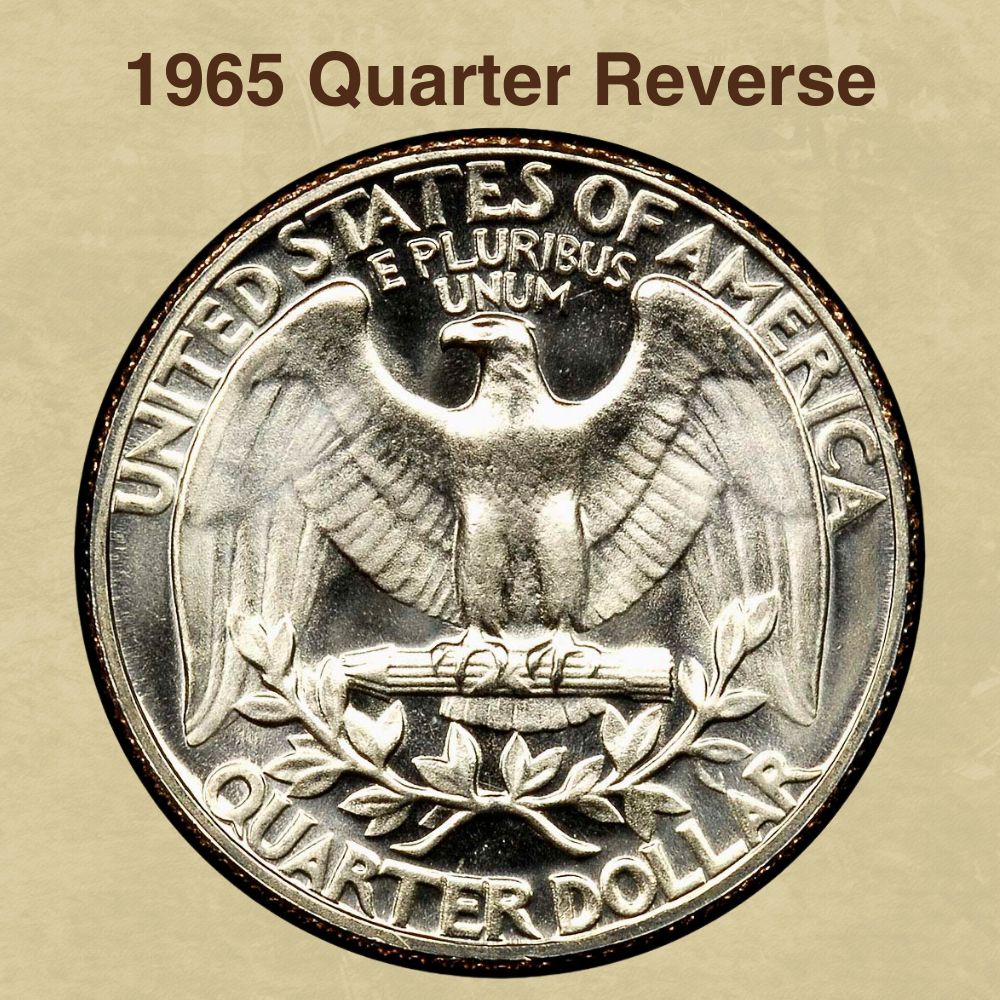
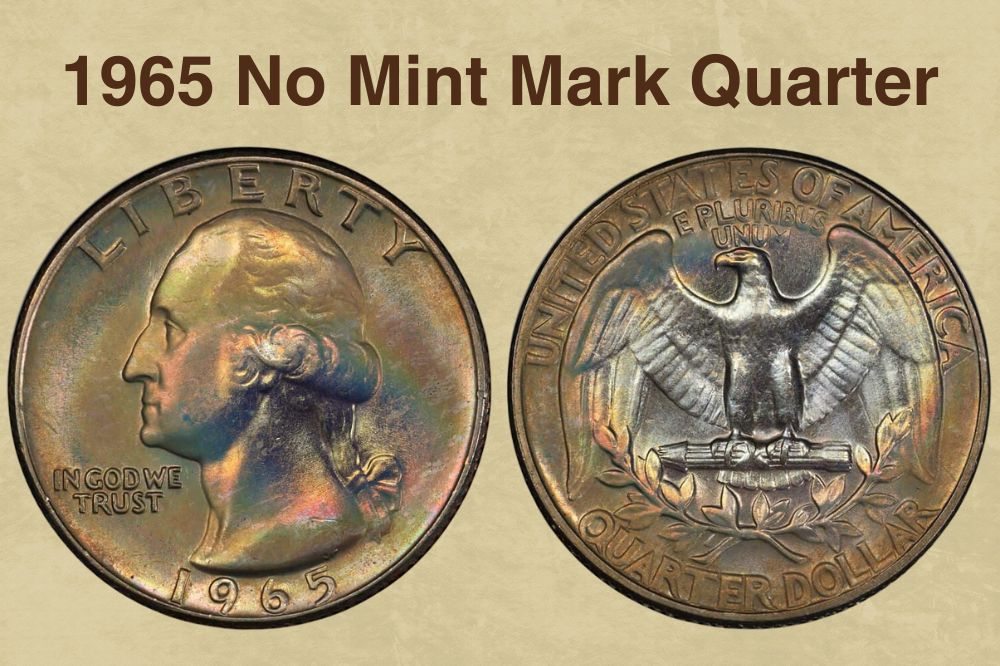
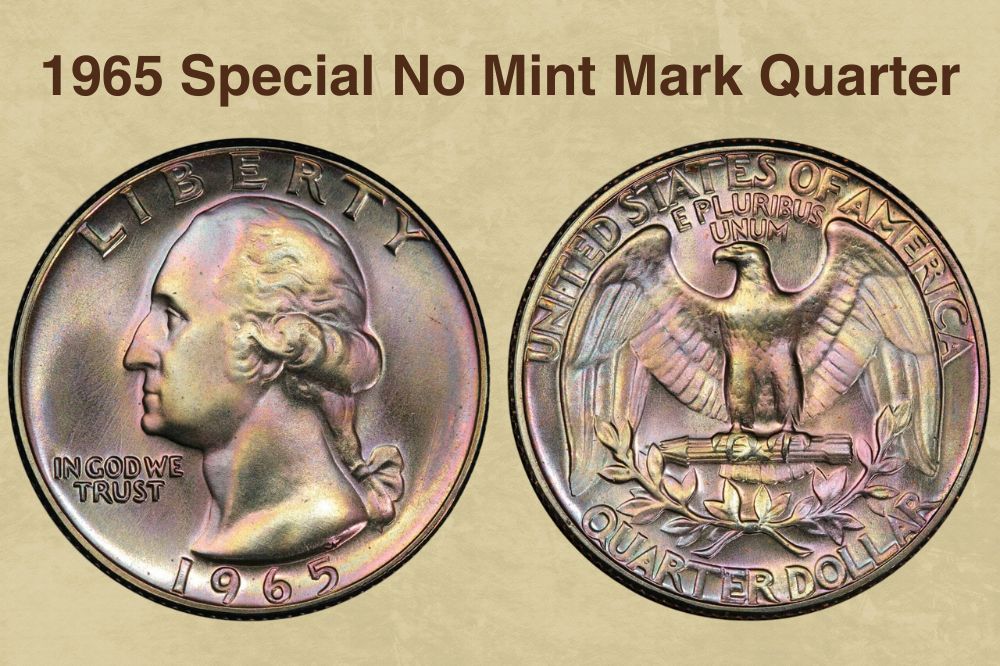
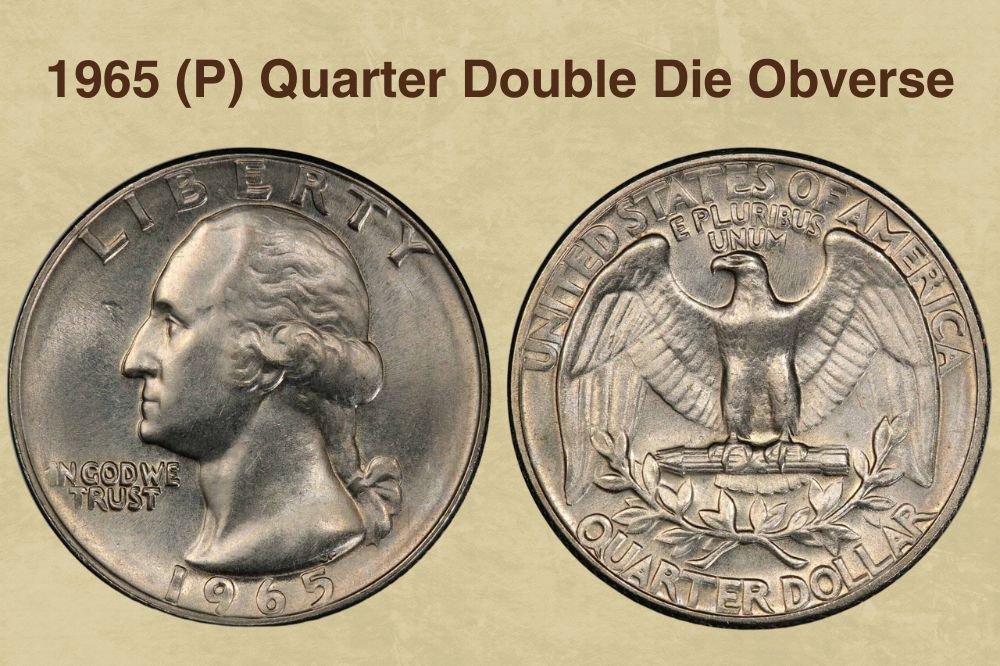
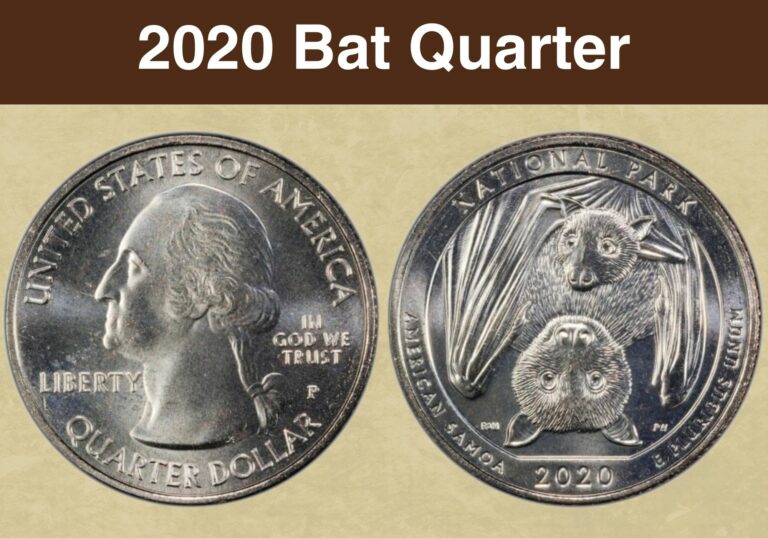
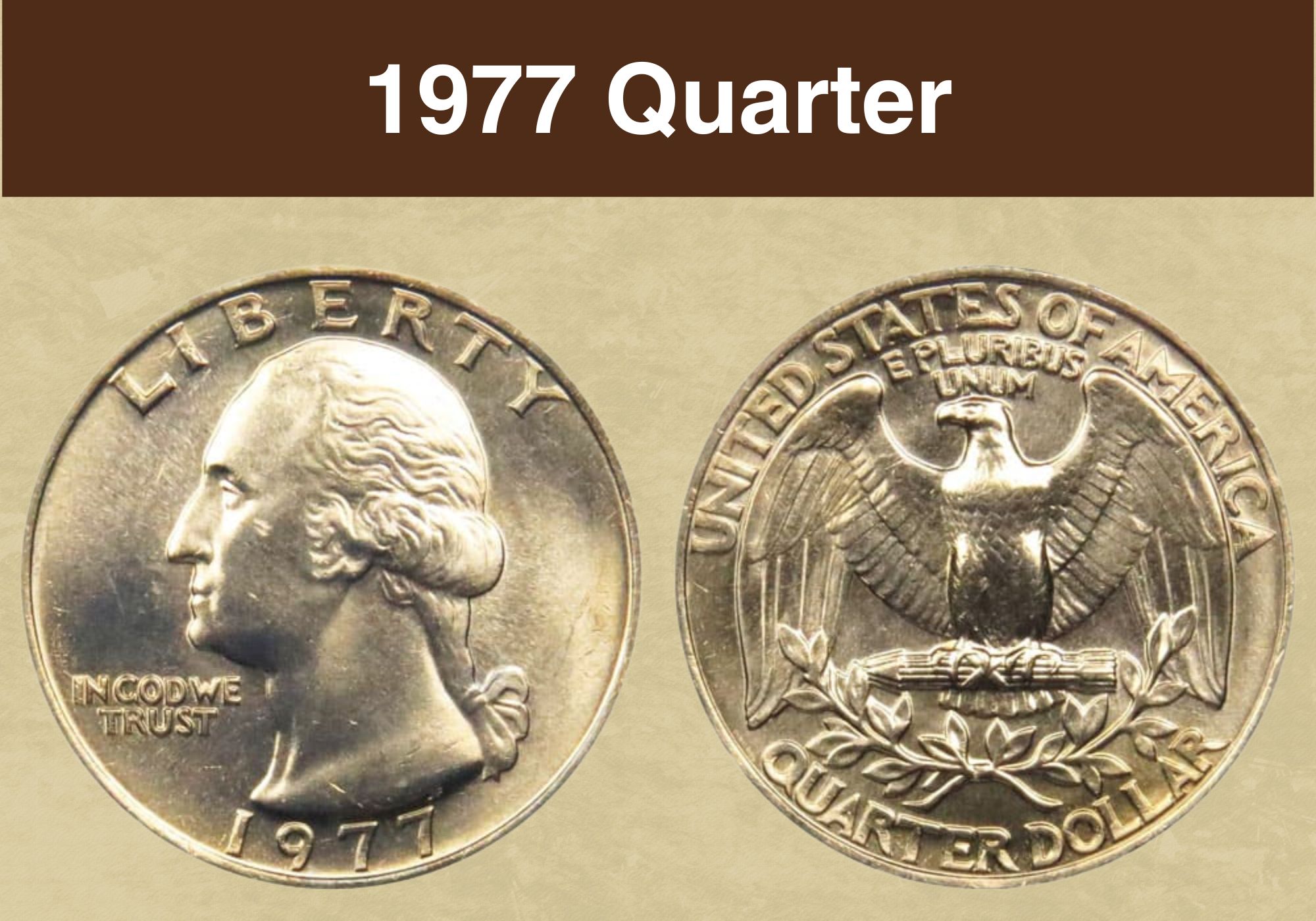
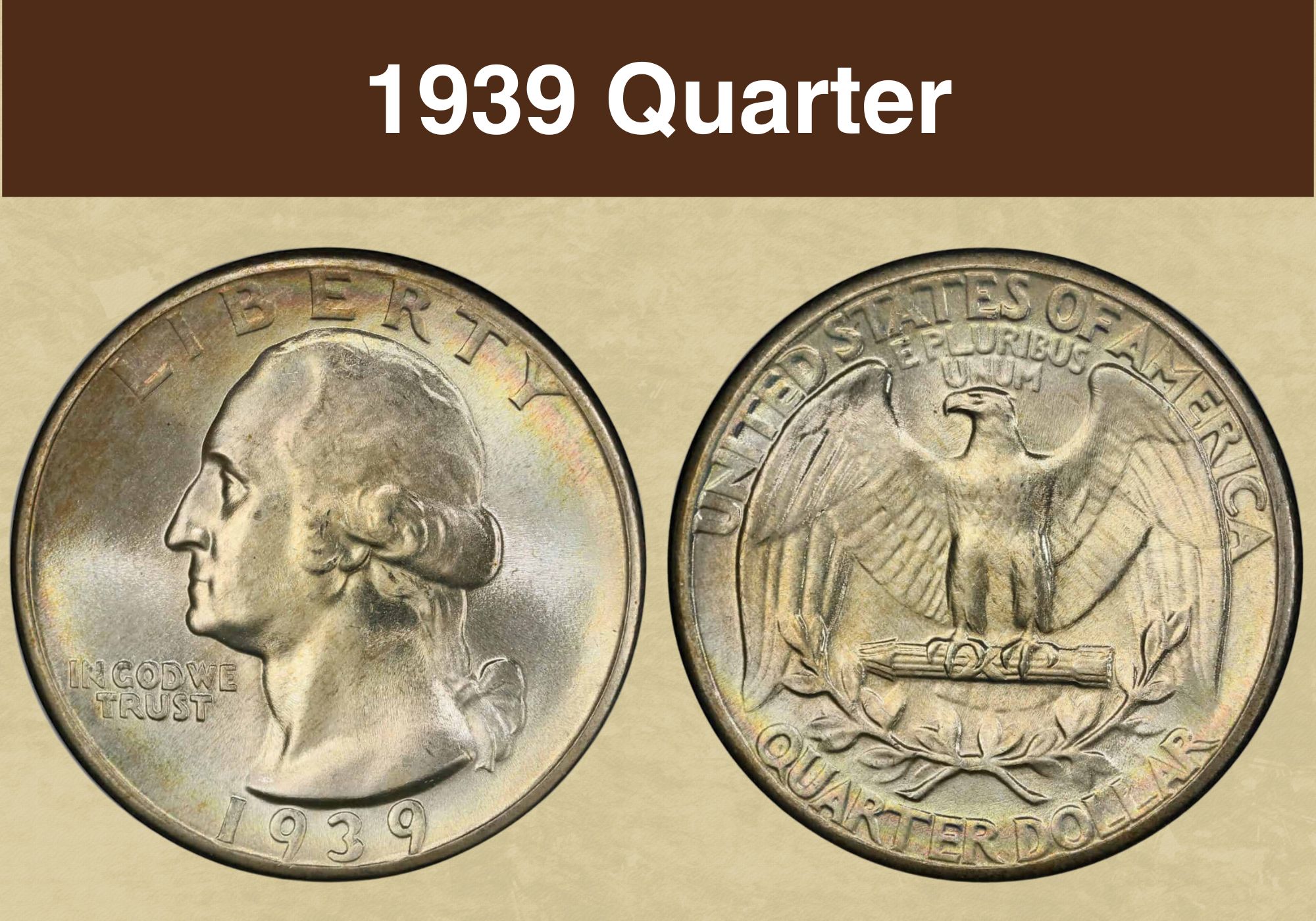
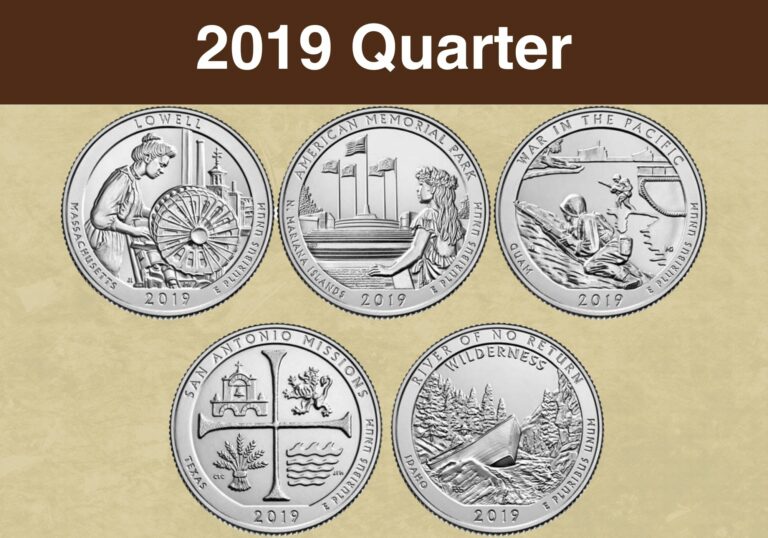
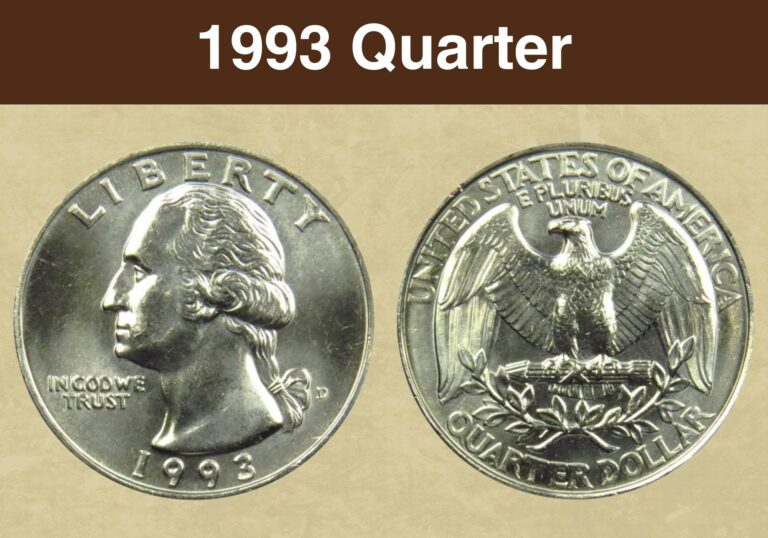
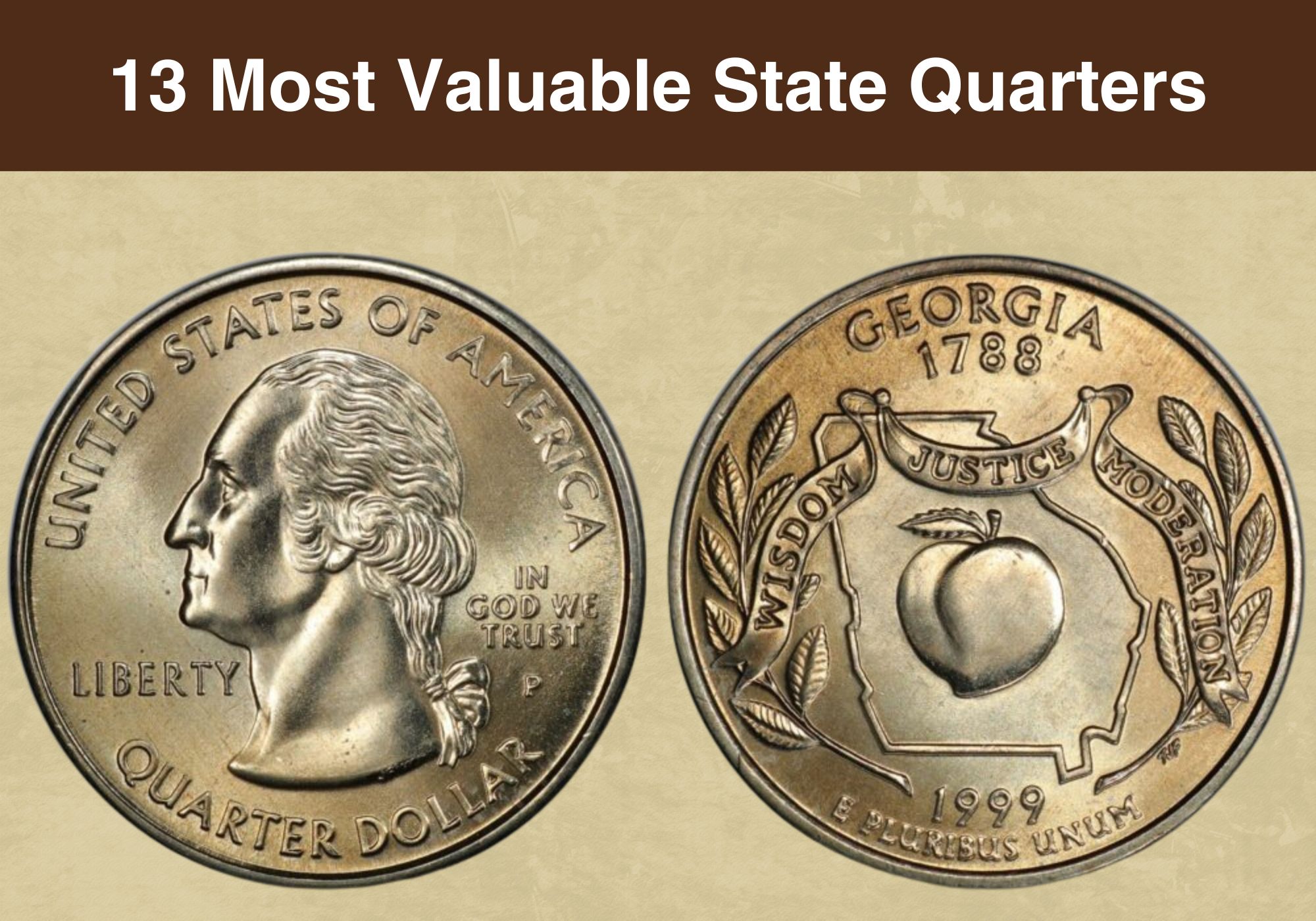
I have a 1965 quarter that has a 1 or a line between the 9 and 6.What can you tell me about it
I have a 1965 quarter with no mint mark and errors trying to see if it’s worth anything
I have a 1965 quarter coin with no mint mark can you tell me its price